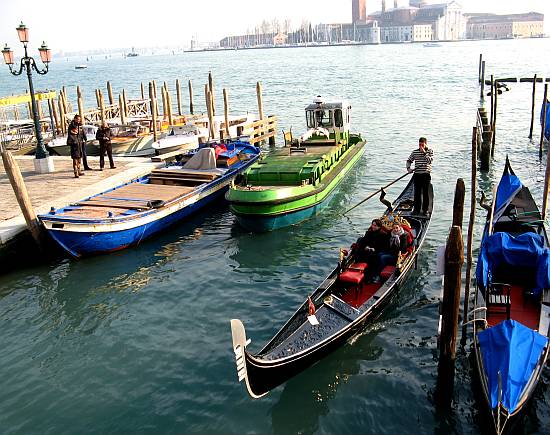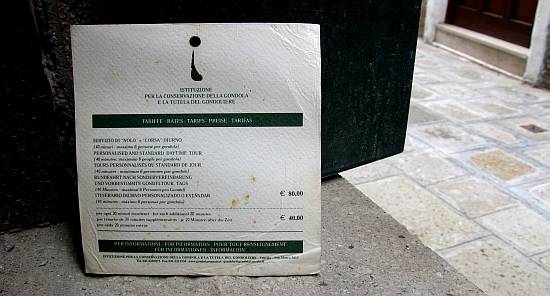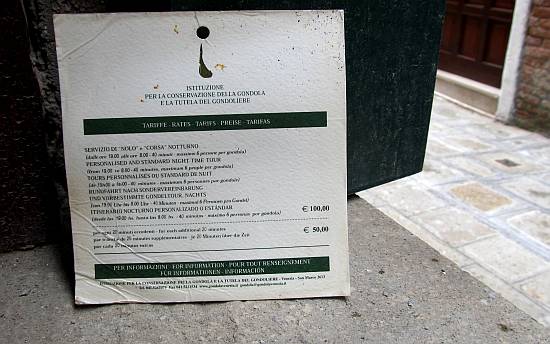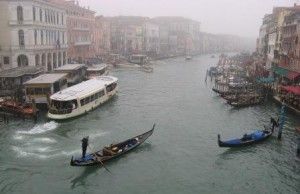It pains me to write this, but I hope that doing so will serve some useful purpose.
Gondoliers are arguably the symbol of Venice, and as such could be expected to evince a sense of the importance of same. That’s just my opinion.
What is not opinion, but fact, is that they are independent, masters of their own boats, lords of their lives, and — yes — of their money. I mean, of your money.
I know a good number of gondoliers and can attest that many are fine, professional people and first-rate ambassadors for their amazing city. Among other things, they’re often the first to fish tourists out of the canals when the said tourists have misjudged the slipperiness of the algae on that stone step, or to have miscalculated other maneuvers.

Then there are the others. There are some that easily inspire apprehension, who resemble inmates out on a work-release program, with boats to match. But don’t be distracted by the externals, because how a gondolier behaves depends on many and easily shifting factors apart from his housekeeping and personal care, and you don’t want to find yourself in the middle when the shifting is going on.
I wouldn’t bring it up at all, but there has been a recent situation here, amply reported in the Gazzettino, in which a gondolier charged a Russian couple 400 euros ($496) for a spin in his gondola that took less than an hour. You could probably justify that price if you included a bottle of the Shipwrecked 1907 Heidsieck champagne poured into Baccarat flutes while the gondolier rowed you to Trieste singing the “Improvviso” from Andrea Chenier.
Then again, he could skip all that and just ask for the dough. Which he did.
As you see by the rates standardized by the Ente Gondola, the gondoliers’ sort-of governing body, he should have asked 80 euros, or 100 euros, depending on the time of day.
But no.
People tend to be intimidated by gondoliers. People need to get past that. The Ente Gondola has tried to help, by insisting that the gondoliers exhibit the price scale. Most gondoliers have done so, by attaching a piece of plastificated paper 5 1/2 inches square to the prow of their boat — a place a potential passenger isn’t likely to approach, even if armed with the necessary magnifying glass to read the type.

And it’s printed on both sides, so you’d have to turn it over to get the complete information.
Let’s move on to the happy ending: The Russian couple registered a complaint and got their money back, with a promise from the Ente Gondola of a free ride next time. To which I’m pretty sure they replied “There’s not going to be a next time.” It doesn’t sound better in Russian.
So here’s the simplest solution. Let’s say that you and a gondolier have begun to converse. Whether you approached him or vice versa, you’re talking about money.
He mentions a figure that doesn’t sound like what is printed on the Ente Gondola’s site. So you say, “Would you please show me the rates printed on the card on your gondola?”
If he doesn’t have the card on his gondola, you move on. If he has it but can’t explain why the rate he quoted you doesn’t match what’s printed, you move on. No need for complicated discussions or heated words. It’s a big world, and there will always be another gondolier.


